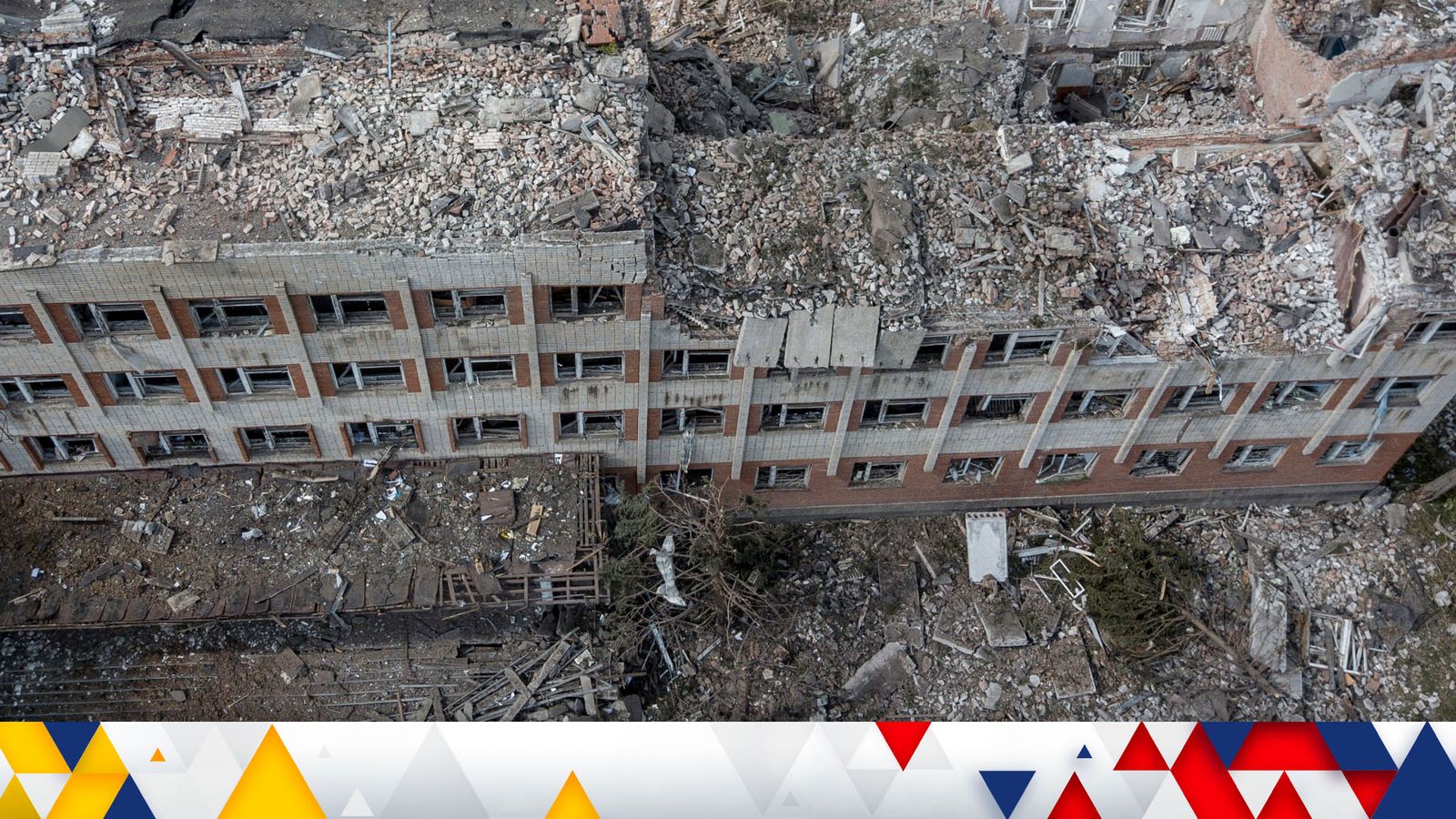Scientists hoping to bury nuclear waste deep underground have vowed that plans will not go ahead without local support.
Highly radioactive material equivalent in size to 6,500 double-decker buses is currently stored above ground at 20 sites around the UK. Some silos are beginning to deteriorate with age.
Nuclear Waste Services (NWS), a government agency, says burying it in the bedrock offers a long term solution, safe from terrorism, war and natural disasters.
It is consulting with the coastal communities of Allerdale, Mid-Copeland and South Copeland in Cumbria, and Theddlethorpe in Lincolnshire, about building a geological disposal facility (GDF) under the seabed.
Prof Neil Hunter, chief scientist for NWS, told Sky News: “If we provide a compelling case, if we provide the evidence to demonstrate safety, and the community wants to proceed, then a decision can be taken to do so.
“But a community holds the right of withdrawal.”
The government is committed to a new generation of nuclear power stations, with the Chancellor Jeremy Hunt this week announcing in the budget plans for small scale reactors.
But with public consultations over the siting of a GDF likely to continue for several years, waste is continuing to pile up in surface storage silos.
There is no plan B if a willing community cannot be found.
Read more:
Rolls-Royce gets funding for moon base nuclear reactor
Give peanut butter to babies to cut allergy rates by 77%
TikTok: Scottish Parliament ‘strongly advises’ MSPs to remove app
Prof Hunter said: “If we were to be unsuccessful (in winning support) it would be for the government to reflect on the way forward. But internationally it is the solution.
“We have confidence that this is a safe way forward for radiological waste management.”
What happens if plans get the go-ahead?
If the plan gets the go-ahead radioactive waste would be taken into a vast warren of tunnels by train.
Heavy duty canisters would be sealed into the bedrock, plugged with clay to keep out water, and the whole complex sealed over when full.
Scientists say the facility would be stable over the hundreds of thousands of years that the radioactive material would take to become safe.
‘I want to make sure the waste is in the safest place it can be’
At a public engagement event in Seascale, a village just two miles from the Sellafield nuclear site in Cumbria, locals were overwhelmingly supportive.
Be the first to get Breaking News
Install the Sky News app for free
David Moore, a farmer, said: “Sellafield has brought great economic benefit.
“But the community recognises that there is waste there now and it has to be managed in a safe way.
“We can’t keep passing it down the generations. I’ve got seven grandchildren and I want to make sure the waste is in the safest place it can be.”
But there is also some opposition.
Keith Hudson, a retired science teacher, backs geological disposal as the safest solution.
But he fears underground water and the complex geology in Cumbria make the location too risky.
“They know the geology is better in the east of the country, where they could build a GDF big enough and do so quicker, better and cheaper,” he said.
But there is no nuclear industry near the proposed GDF site in Lincolnshire, unlike in Cumbria, and making the case to the local community may well be harder.
“That’s the problem with the whole process. It’s not being driven by the science or the economics, but by politics,” Mr Hudson said.
Less than one in a million chance of radioactivity returning to surface
NWS insists that any water in the bedrock off the Cumbrian coast is static or slow moving, and not a risk.
It says the design principle for the GDF is that there will be less than one in a million chance of radioactivity returning to the surface to harm people.
Click to subscribe to the Sky News Daily wherever you get your podcasts
Independent scientists agree it is the best solution to the nuclear industry’s waste legacy.
Prof Claire Corkhill, who studies how nuclear material degrades at the University of Sheffield, said: “We are not just pouring glowing green goo into the ground.
“If you think of the Russian doll concept, you have got the waste inside a container, which is surrounded by a buffer material that acts like sponge to mop up any water. All of that is encased in solid rock.
“The only way we can stably control our radioactive waste in a safe and predictable way is deep underground.”
Please use Chrome browser for a more accessible video player
Finland has almost finished building a geological tomb for its nuclear waste. France, Sweden, Switzerland and Canada also have plans underway.
The UK hopes to have a GDF operating between 2050 and 2060.








